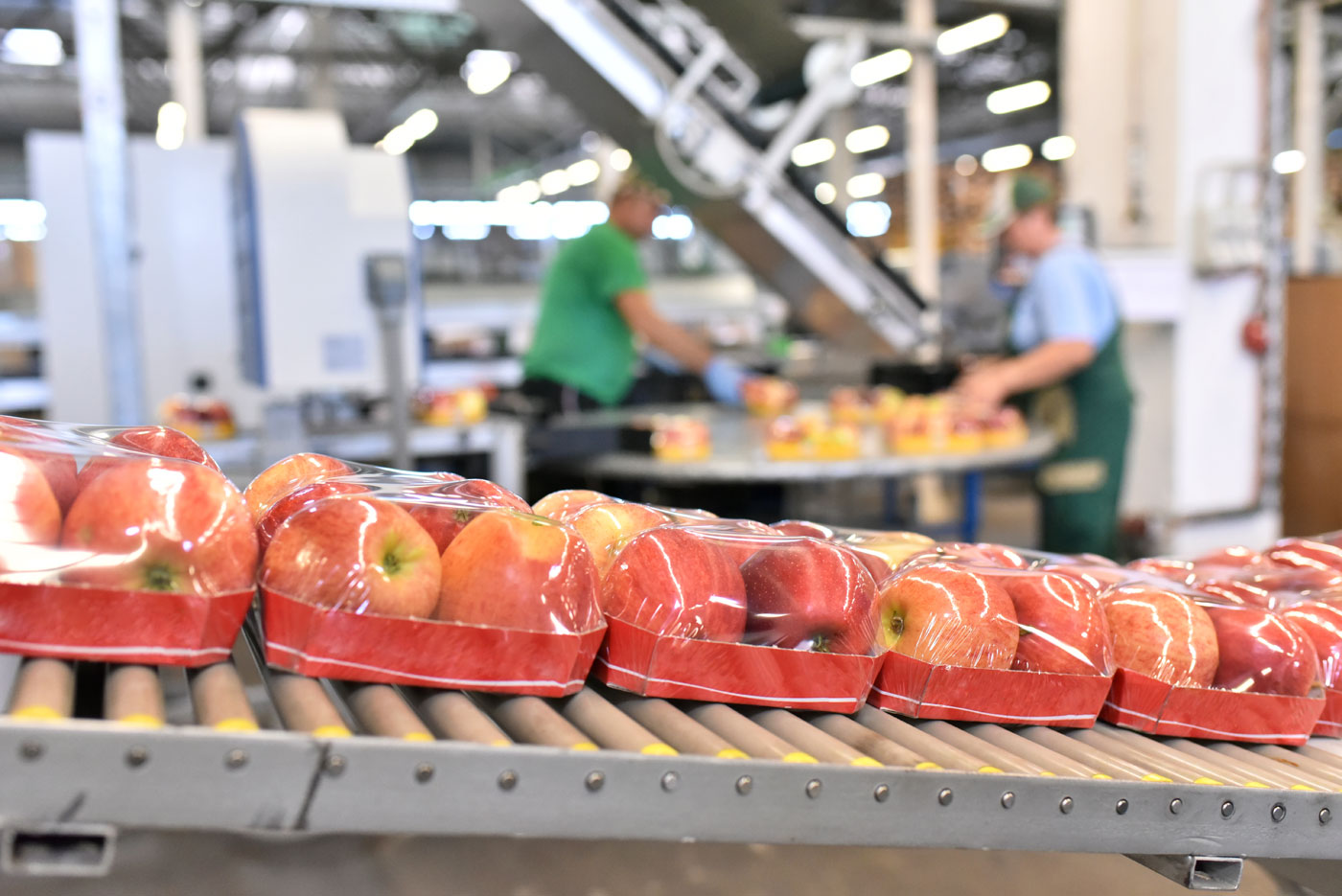Connect your customers and trading partners to more product information, protect your brand, and build greater brand trust with 2D barcodes.
Implementing 2D barcodes can mean a substantial investment in in-line printing systems for producers and packers, so it’s important to weigh up whether you’ll get a good return on investment.
2D products are worth considering if:

The 2D barcode can hold a large amount of data in a small space, and can be scanned by consumers’ smartphones, which means the following benefits for producers and packers:
Brand protection and anti-counterfeiting: Provides detailed product information and provenance to consumers and trading partners, which prevents the risk of counterfeit products, protects the brand, and builds trust.
Improved consumer engagement: 2D codes can encode webpage links, so when the consumer scans the code, you can direct them to further information about the product or brand, such as the brand story, videos and recipes.
Improved traceability and recall management: Provides item-level traceability which cannot be achieved with 1D barcodes, which improves product safety and recall management, and ultimately reduces costs and risks.
Save space on packaging: More information can be held in a smaller barcode, which frees up valuable packaging space.
Error protection: 2D barcodes are equipped with built-in error protection keeping data intact and readable even when the code is scratched, ripped, or marked through.
Fresh food categories, including meat and poultry, are already being rolled out in Woolworths stores.
Before you begin your transition, know the GS1 and Woolworths guidelines for 2D barcodes.
For all other producers and packers, start by evaluating the existing barcodes on-pack to determine whether you need 2D barcodes, and how to use them.
Decide whether to use the GS1 DataMatrix or QR code, depending on your use case.
Work out which encoded data you need to add based on your use case and find the relevant GS1 Application Identifiers.
Ensure software, hardware and databases are updated to source and add data that needs to be printed. In some cases the encoded data is no more than a GTIN, and barcodes can still be printed on pack before packaging.
However, other use cases will need the 2D barcode to be printed with packaging to allow for the variable data (e.g., expiry date, serial number, batch/lot code). This will require in-line printing.
You may already have experience printing variable data in line, with human-readable batch/lot numbers and use-by dates. However, 2D barcodes may still require updates to in-line printing systems.
Talk to Matthews Australasia about which equipment will best fit your printing and labelling needs.
It depends on the product information you want to share on packaging. If there is no need to add additional machine-readable data (such as batch/lot number or use-by date), changing to 2D barcodes is not needed.
The biggest cost for producers and packers is upgrading in-line printing infrastructure. This cost will vary depending on the business’s needs.
The best way to approach it is to think about the cost of NOT moving to 2D barcodes. Is your brand currently at risk by counterfeiters? Will 2D barcodes help instil trust in your brand? Do you need 2D barcodes when exporting your products? If so, it could be worth transitioning to 2D barcodes for your brand.
Start discussions with solution providers early. They can recommend and help guide you towards the right coding, labelling or data capture solution for your needs, which will ensure a smooth transition for all involved.
Woolworth is using GS1 Datamatrix with all codes in a square pattern (equal X and Y dimensions).
Code magnification (the X dimension) is critical to get right for scannability. The X dimension for Woolworths must be between 0.625-0.9mm, which is the most efficient decoding method for their scanners. On a curved product (such as a lamb shoulder) the scanner will fail at larger magnifications.
Not yet. Many retailers are still only using linear scanners, not optical scanners, which means they cannot scan 2D barcodes at this stage. Until updates have been made across all retailers, you need to include both the 1D and 2D barcodes on your products.
Human readable interpretation (HRI) text refers to text printed exactly as it is encoded in the barcode. For 2D barcodes encoding a large amount of data, it is not practical to display all the data in HRI form.
It is mandatory to print the GTIN (at a minimum) underneath a GS1 DataMatrix barcode. This enables manual processing of the GTIN at POS when the barcode cannot be scanned.
GS1 Application Identifiers (AI) are used to enable scanners to understand what information it is reading. An AI code is required in front of each piece of data.
Each AI is a numeric code made up of two, three, or four digits.
Common AIs include:
01 Global Trade Item Number (GTIN)
391 Sell price
310 NET weight in kgs
17 Use by/ Expiry date
15 Best before date
10 Batch/Lot number
It depends on the scanning environment, print quality and resolution. The most important factor is to ensure it can be read by scanners. Check the GS1 General Specifications (section 5.12.3.1) for the minimum and maximum sizes allowed for 2D barcodes on products scanned at retail point-of-sale.